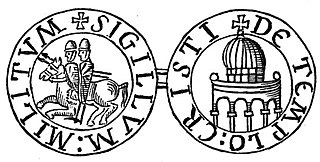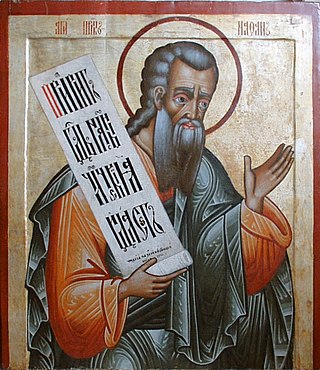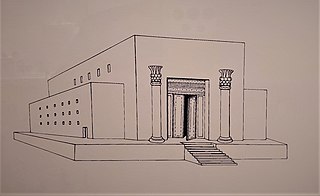Summary
Hancock proposes that the ark was removed from Solomon's Temple in Jerusalem by temple priests during the reign of the evil King Manasseh of Judah around 650 BC, and then it spent about 200 years in a purpose-built temple in Elephantine, Egypt. It was removed around 470 BC to Ethiopia via tributaries to the Nile River, where it was kept on the Jewish island of Tana Qirqos for about eight hundred more years as the centre of a strong Jewish community there. It finally came into the hands of the young Ethiopian Orthodox Church in the 5th century, who took it to their capital of Axum, where it supposedly remains there to this day in the Church of Our Lady Mary of Zion. The Ethiopian Church believes that the Ark is indeed held today in that church, but as opposed to the book, they believe that it was brought to Ethiopia by Menelik I, stolen from Solomon's Temple during the reign of King Solomon himself, some 200 years earlier than the events proposed by the book.
Hancock also claims that the Holy Grail and the Ark of the Covenant may possibly be one and the same relic as a result of a comparative study of the great German epic Wolfram von Eschenbach's Parzival , the Ethiopian national epic Kebra Nagast , the legends of Prester John, and the iconography of Chartres Cathedral.
Hancock also claims that the Knights Templar searched for the lost Ark of the Covenant, among other relics, at the site of the Temple Mount in Jerusalem in the 12th century. It is likely that an Ethiopian king in exile (Lalibela) in Jerusalem in the 12th century made contact with the Knights Templar. This claim is supported by the legacy of architecture in the city of Lalibela built during the reign of King Lalibela, of which the Church of Saint George, Lalibela is of particular interest, in relation to the development of Gothic architecture.
The Ethiopian Church, apparently fearful of losing the Ark to the Knights Templar, sent emissaries in 1306 to Pope Clement V; the Catholic Church's fear of the Knights Templar acquiring the power of the Ark of the Covenant, the book claims, is one of the reasons why Pope Clement V began prosecution and arrest of the Knights Templar in 1307.

The Ark of the Covenant, also known as the Ark of the Testimony or the Ark of God, is a purported religious storage and relic held to be the most sacred object by the Israelites.

The Poor Fellow-Soldiers of Christ and of the Temple of Solomon, mainly known as the Knights Templar, was a French military order of the Catholic faith, and one of the wealthiest and most popular military orders in Western Christianity. They were founded c. 1119 to defend pilgrims on their way to Jerusalem, with their headquarters located there on the Temple Mount, and existed for nearly two centuries during the Middle Ages.

Solomon, also called Jedidiah, was a monarch of ancient Israel and the son and successor of King David, according to the Hebrew Bible or Old Testament. He is described as having been the penultimate ruler of an amalgamated Israel and Judah. The hypothesized dates of Solomon's reign are from 970 to 931 BCE. According to the Bible, after his death, his son and successor Rehoboam adopted a harsh policy towards the northern tribes, eventually leading to the splitting of the Israelites between the Kingdom of Israel in the north and the Kingdom of Judah in the south. Following the split, the biblical narrative depicts his patrilineal descendants ruling over Judah alone.

Menelik I was the legendary first Emperor of Ethiopia. According to Kebra Nagast, a 14th-century national epic, in the 10th century BC he is said to have inaugurated the Solomonic dynasty of Ethiopia, so named because Menelik I was the son of the biblical King Solomon of ancient Israel and of Makeda, the Queen of Sheba.

The Queen of Sheba, also called Bilqis and Makeda, is a figure first mentioned in the Hebrew Bible. In the original story, she brings a caravan of valuable gifts for the Israelite King Solomon. This account has undergone extensive Jewish, Islamic, Yemenite and Ethiopian elaborations, and it has become the subject of one of the most widespread and fertile cycles of legends in Asia and Africa.

The Church of Saint George is one of eleven rock-hewn monolithic churches in Lalibela, a town in the Amhara Region of Ethiopia. Originally named Roha (Warwar), the historical and religious site was named Lalibela after the King Gebre Mesqel Lalibela of the Zagwe dynasty, who commissioned its construction. He is regarded as a saint by the Ethiopian Orthodox Tewahedo Church.

Lalibela is a town in the Amhara Region of Ethiopia. Located in the Lasta district and North Wollo Zone, it is a tourist site for its famous rock-cut monolithic churches designed in contrast to the earlier monolithic churches in Ethiopia. The whole of Lalibela is a large and important site for the antiquity, medieval, and post-medieval civilization of Ethiopia. To Christians, Lalibela is one of Ethiopia's holiest cities, and a center of pilgrimage.
Shishak, also spelled Shishaq or Susac, was, according to the Hebrew Bible, an Egyptian pharaoh who sacked Jerusalem in the 10th century BC. He is usually identified with the pharaoh Shoshenq I.

The Church of Our Lady, Mary of Zion is an Ethiopian Orthodox Tewahedo Church which is claimed to contain the Ark of the Covenant.

The Kebra Nagast, var. Kebra Negast, or The Glory of the Kings, is a 14th-century national epic of Ethiopia, written in Geʽez by the nebure id Ishaq of Aksum. In its existing form, the text is at least 700 years old and is considered by many Orthodox Tewahedo Christians to be a historically reliable work. It is considered to hold the genealogy of the Solomonic dynasty, which followed the Orthodox Tewahedo Church.
Hilkiah was a Kohen or Israelite priest at the time of King Josiah.

The Zagwe dynasty was a medieval Agaw monarchy that ruled the northern parts of Ethiopia and Eritrea. The Agaw are a Cushitic ethnic group native to the northern highlands of Ethiopia and neighboring Eritrea. It ruled large parts of the territory from approximately 1137 to 1270 AD, when the last Zagwe King Za-Ilmaknun was killed in battle by the forces of the Amhara King Yekuno Amlak. The Zagwe are most famous for their king Gebre Meskel Lalibela, who is credited with having ordered the construction of the rock-hewn monolithic churches of Lalibela.

Kaleb, also known as Saint Elesbaan, was King of Aksum, which was situated in modern-day Ethiopia and Eritrea

Rothley Temple, or more correctly Rothley Preceptory, was a preceptory in the village of Rothley, Leicestershire, England, associated with both the Knights Templar and the Knights Hospitaller.

Lalibela, regnal name Gebre Meskel, was a king of the Zagwe dynasty, reigning from 1181 to 1221. He was the son of Jan Seyum and the brother of Kedus Harbe. Perhaps the best-known Zagwe monarch, he is credited as the patron of the namesake monolithic rock-hewn churches of Lalibela. He is venerated as a saint by the Ethiopian Orthodox Tewahedo Church on 19 June.

Nathan is a prophet in the Hebrew Bible. His actions are described in the Books of Samuel, Kings, and Chronicles.
The original historic Knights Templar were a Christian military order, the Order of the Poor Fellow Soldiers of Christ and of the Temple of Solomon, that existed from the 12th to 14th centuries to provide warriors in the Crusades. These men were famous in the high and late Middle Ages, but the Order was disbanded very suddenly by King Philip IV of France, who took action against the Templars in order to avoid repaying his own financial debts. He accused them of heresy, ordered the arrest of all Templars within his realm, put the Order under trial and many of them burned at the stake. The dramatic and rapid end of the Order led to many stories and legends developing about them over the following centuries. The Order and its members increasingly appear in modern fiction, though most of these references portray the medieval organization inaccurately.

The Templum Domini was the name attributed by the Crusaders to the Dome of the Rock in Jerusalem. It became an important symbol of Jerusalem, depicted on coins minted under the Catholic Christian Kingdom of Jerusalem.

Solomon's Temple, also known as the First Temple, was a biblical Temple in Jerusalem believed to have existed between the 10th and 6th centuries BCE. Its description is largely based on narratives in the Hebrew Bible, in which it was commissioned by biblical king Solomon before being destroyed during the Siege of Jerusalem by Nebuchadnezzar II of the Neo-Babylonian Empire in 587 BCE. No remains of the destroyed temple have ever been found. Most modern scholars agree that the First Temple existed on the Temple Mount in Jerusalem by the time of the Babylonian siege, and there is significant debate among scholars over the date of its construction and the identity of its builder.
The history of the Knights Templar in England began when the French nobleman Hugues de Payens, founder and Grand Master of the Order, visited the country in 1128 to raise men and money for the Crusades.














